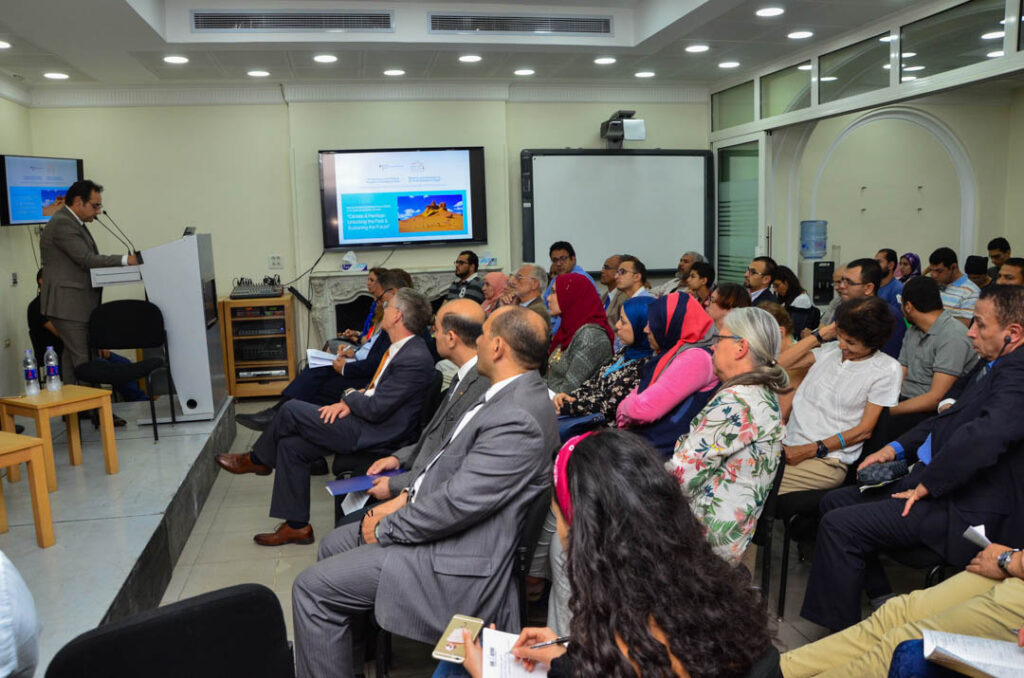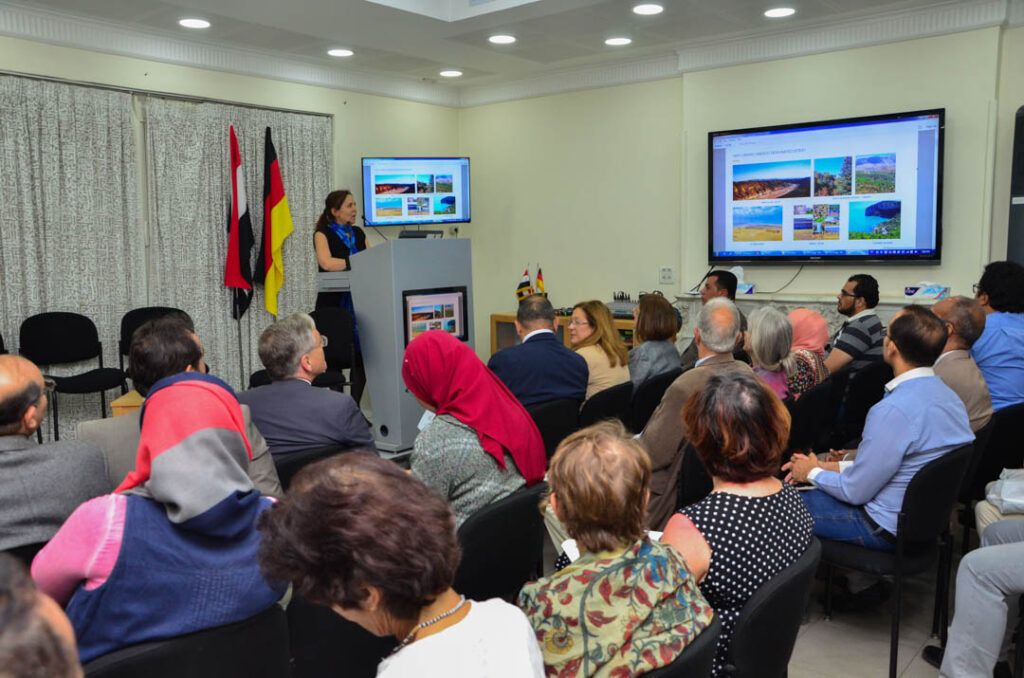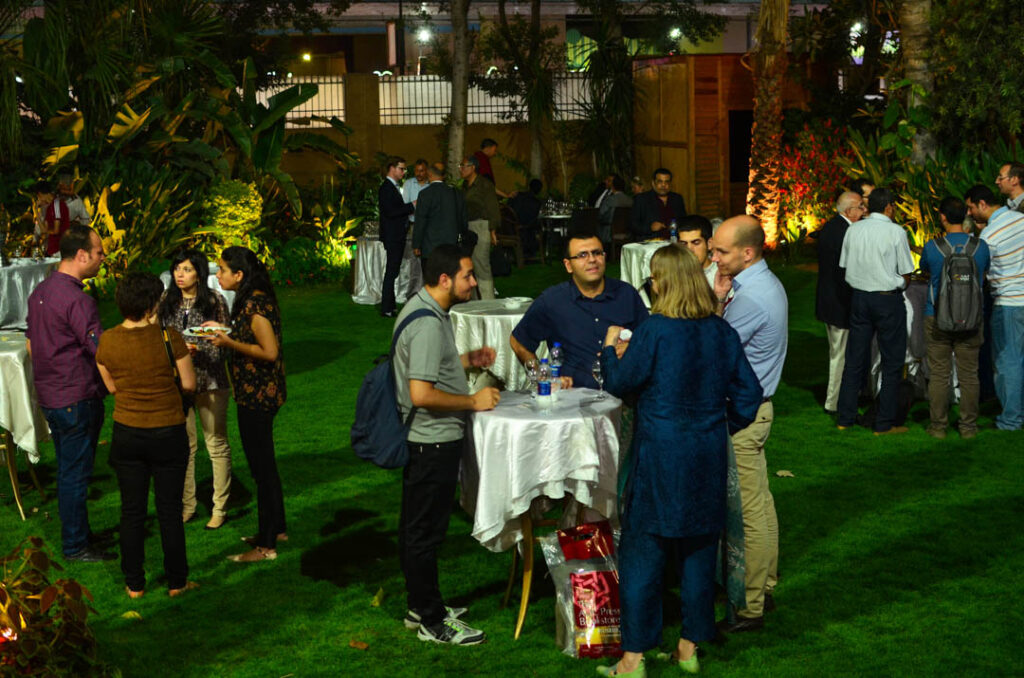Climate & Heritage: Unlocking the Past & Sustaining the Future
2018
Apr 17th
At German Academic Exchange Service (DAAD), 11 Al Saleh Ayoub Street, Zamalek, Cairo, Egypt.
On Tuesday 17 April 2018, the 52nd Cairo Climate Talks were held at the premises of the German Academic Exchange Service (DAAD) in Zamalek under the title of “Climate and Heritage: Unlocking the Past and Sustaining the Future”.
In his opening remarks, the Ambassador of the Federal Republic of Germany, Julius Georg Luy, thanked all participants and partners of the event including the Egyptian Ministry of Environment and the Ministry of Antiquities. Ambassador Luy went on to highlight the importance of Cultural heritage not only as an economic factor for tourism, but also as a glue for the social fabric in that it binds Egyptians together as a people with common origins, thereby transcending modern social cleavages constituted by religions, gender, or socio-economic differences. Identity, he added, is indeed a basic need for human beings besides food, water, health, security and justice. He also highlighted the commitments of Germany in preserving cultural heritage around the world from imminent threats, whether arising in conflict zones or linked to climate change.
Dr. Sherif Abdelrahim, Head of the Central Department of Climate Change at the Egyptian Environmental Affairs Agency, welcomed the audience on behalf of the Minister of Environment and highlighted the multiple efforts taken by the Ministry to combat climate change and its adverse effects on cultural heritage. Dr. Sherif emphasized the role of the National Council on Climate Change, which was established in 2015 and managed to include all relevant stakeholders in order to incorporate climate change policies in the Egyptian national agenda. Some of the Ministry’s priorities include Alexandria with its Greek and Roman history as one of the most vulnerable cities. He also mentioned the new strategy for Giza governorate developed in cooperation with German partners which will help protect the pyramids and other sites.
Dr. Magdy Mansour, Director General of Conservation and Restoration of Archaeological Sites and Museums in Greater Cairo at the Ministry of Antiquities, underligned the importance with the gathering. “Heritage is our legacy of the past, what we live today and what we pass on to future generations. It is irreplaceable and special. World heritage sites belong to all the world and all people, regardless of where they are.” He added that world heritage properties are and will be affected by climate change. Their preservation requires an understanding of the threats and adequate responses.
In a keynote address, Ms. Elsa Sattout, Program Specialist for Ecological and Earth Sciences at UNESCO, presented UNESCO’s multi-facetted global, regional and sub-regional efforts in preservation, protection and restoration of cultural heritage. Ms. Sattout singled out ecosystem links as one of the most efficient ways to achieve these goals. “Ecosystems can give us data on the evolution of people and their cultures. Local science and traditional knowledge can provide incremental data to increase the efficiency of our adaptation and mitigation efforts”.
After these opening remarks, a panel discussion ensued bringing together representatives of government, academia and civil society, moderated by science journalist Meredith Brand. The panel set out to discuss in depth the challenges and risks posed by climate change to cultural heritage as well as possible solutions.
Dr. Rudolph Kuper, Professor at the University of Cologne, Chairman of the Heinrich Barth Institute and a pioneer of Environmental Archaeology, started with an overview of changes in the Egyptian climate over the past 10,000 years. In his research conducted in Egypt during the past 30 years, his approach was not to examine the effects of climate change on cultural heritage, but to ask what heritage can tell us about how the climate developed. Dr. Kuper added: “Contrary to received knowledge I am not interested in finding something. I am interested in finding something out” – an approach he calls “invisible archaeology”. As an archaeologist he doesn’t see himself as a treasure hunter or Indiana Jones, but rather as a detective. In his research, Dr. Kuper found out that between 10,000 and 5,000 years ago, the Sahara Desert was in fact a savanna populated by a Neolithic civilization. When this region started to dry up again, these people who lived as cattle keepers were driven to the banks of the Nile and then moved to agriculture. He concluded “The Sahara is a motor of African history, it has changed languages, politics, religions of people in Africa. It has also shaped the rising up of the Egyptian civilization.”
Asked about the difference between climate change in ancient times and climate change happening today, Mr. Abdelhamid Salah, Founder and CEO of the Egyptian Heritage Rescue Foundation, pointed out that climate change today is happening much more rapidly. “Climate change used to be a long process happening over a long period of time. Nowadays we can see accelerated climate change happening over a much shorter time span which makes mitigation and adaptation more difficult.”
Dr. Ghaith Fariz, Director of the UNESCO Regional Bureau for Sciences in the Arab States added that most of these changes were happening due to natural effects. However, what has been happening recently is to a large extent due to human activity and in fact an abuse of human power. “Our power now is more visible, we are affecting nature, and it is a negative effect”. He added that the importance to develop while respecting nature rather than despite it.
Dr. Mansour emphasized that in greater Cairo changes in weather, pollution and even light can be observed. According to him, this “hot topic” needed more awareness. Possible solutions include creating a risk map and a priority map to prioritize measures and manage risks. Mr. Salah saw the rising salinity as one of the major problems “99% of our heritage could be affected by salts. These salts could change the stone composition in many sites, and they become more powerful when they are accompanied by water and humidity. We have seen these effects in Gamaleya, in Saharaa el-Mamalik and in el-Darb el-Ahmar, where those affects are visible to the naked eye”.
Mr. Abdelwahab Afifi, plant ecologist at the National Biodiversity Central Department and National Focal Point of the Nature Conservation Sector in the Egyptian Environmental Affairs Agency, highlighted the importance of using cultural and traditional knowledge to adapt to climate change and to conserve biodiversity. “We need to protect traditional knowledge of local communities in the Red Sea and other regions, which in turn can help in the preservation of cultural heritage”.
All panelists agreed that more cooperation is needed. One aspect mentioned was that bureaucracy sometimes causes delays in a matter that is quite urgent, which is why a prioritization of excavations and rescue efforts is needed. Interdisciplinary cooperation and educational programs to help preserve and protect these sites was also proposed by a number of panelists. The UNESCO representative pointed out the importance of using science and technological advancement in those efforts as well of local and traditional knowledge. On the relationship of government and civil society, panelists expressed hope that the government would trust non-governmental organisations and see them as an ally in preservation and rescue efforts.
Meet our Panelists
Dr. Abdulwahab Afifi
Plant Ecologist, National Biodiversity Central Department & National Focal Point, Nature Conservation Sector, Egyptian Environmental Affairs Agency (EEAA)
Dr. Ghaith Fariz
Director of UNESCO Regional Bureau for Sciences in the Arab States
Dr. Rudolph Kuperl
University of Cologne (Germany), Chairman of Heinrich Barth Institute e.V.
Dr. Kholoud Mohamed Ali
Geologist, Institute of African Research and Studies, Cairo University
Mr. Abdelhamid Salah ElSherif
CEO, Egyptian Heritage Rescue Foundation
Meet our Moderators
Ms. Meredith Brand
Science Journalist
Venue / location
At German Academic Exchange Service (DAAD), 11 Al Saleh Ayoub Street, Zamalek, Cairo, Egypt.




Are you interested? Don’t miss out by registering to our events. We hope to see you there.
